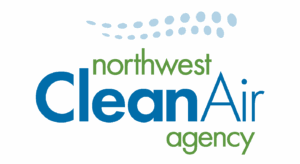The Northwest Clean Air Agency implements the WA and Federal Clean Air Acts through Programs and takes an active role in making information available to the public.
Table Of Contents
Programs

To preserve the air we breathe, we require Best Available Control Technology for new sources of air pollution.

Businesses that emit air pollution, including all facilities with construction permits, must register with NWCAA and pay annual fees.

Some facilities are subject to a federal requirement to obtain an Air Operating Permit that consolidates all the facility construction permits with applicable federal, state, and local regulations into a single document.

If you are planning a remodeling or demolition project in Island, Skagit, or Whatcom counties, you must determine if asbestos is present and remove it safely.

In partnership with local governments we regulate burning in our jurisdiction.

About half of all homes in northwest Washington have some type of wood-heating device. During the winter, wood smoke can account for most of the air pollution recorded in residential areas.

To keep air quality in our region among the cleanest in the country, we work with the businesses we regulate and public through field inspections. We prefer to inform people of requirements to achieve compliance and prevent pollution. But when businesses and individuals are out of compliance, we can and do hold them accountable.

Some farmers use agricultural burning to clear fields after a harvest and control pests. Permits are required for agricultural burning, but we encourage farmers to seek alternatives to burning to reduce air pollution that can harm people’s safety and health from breathing smoke-filled air.
Additional Resources
Projects
Climate Mitigation and Resilience Projects
UPDATE: On April 10, the Northwest Clean Air Agency’s Board of Directors voted to provide…
Curb it, Don’t Burn it
The Curb It. Don’t Burn It. Program, offering 6 months of free curbside garbage service,…

